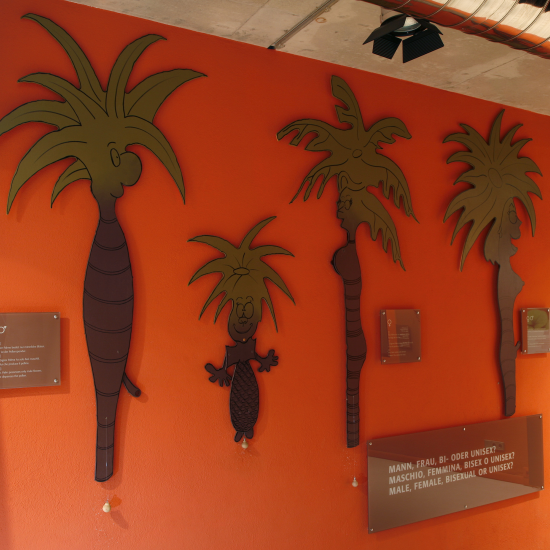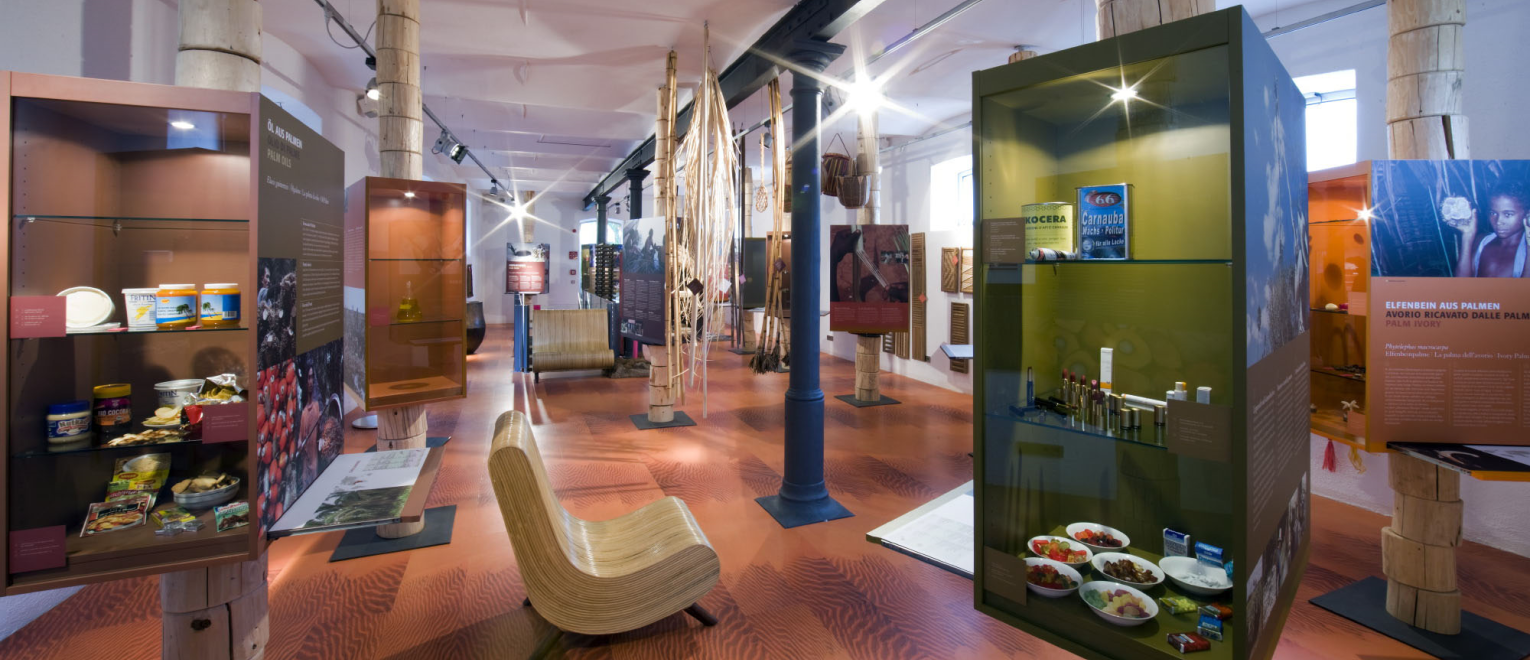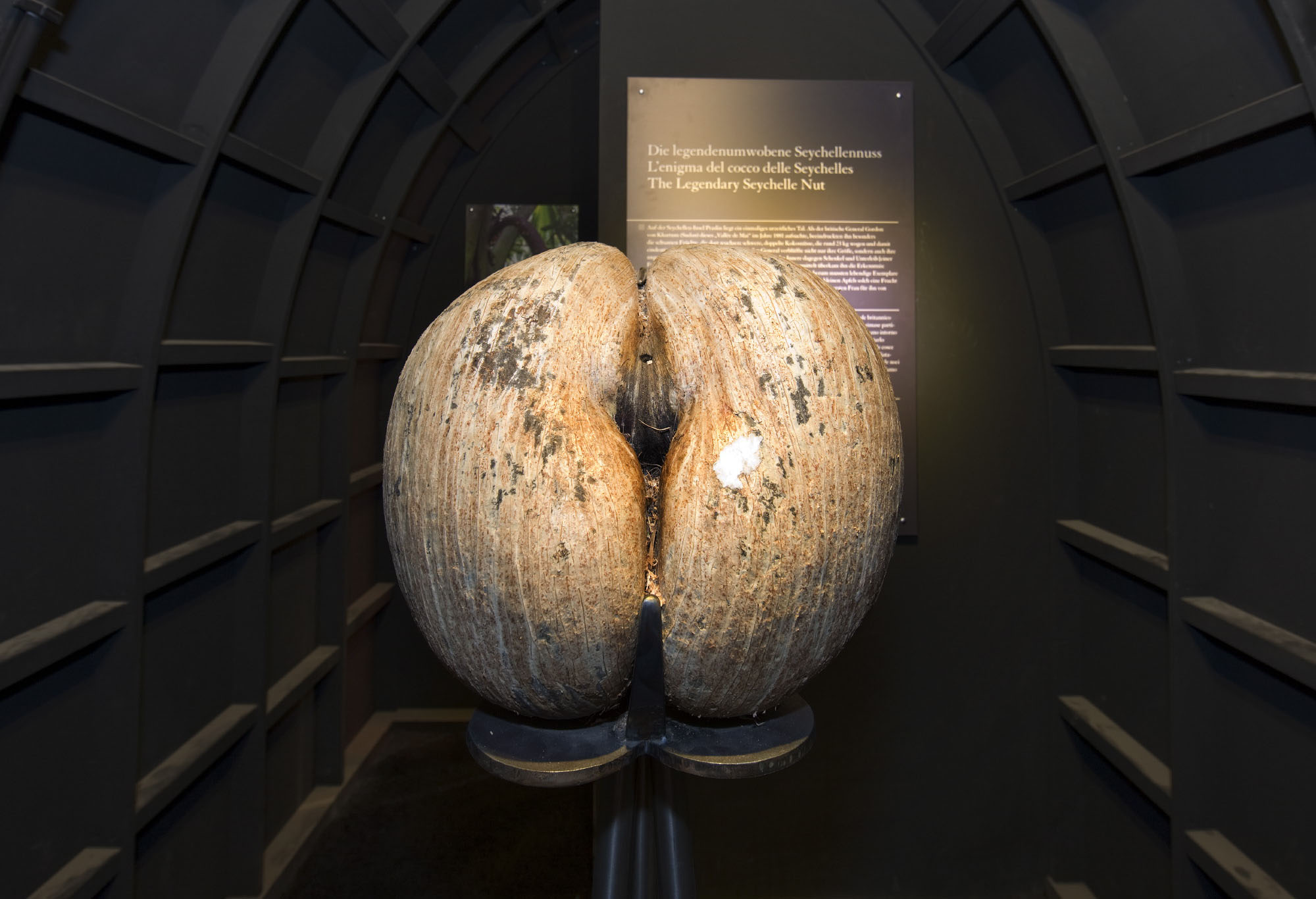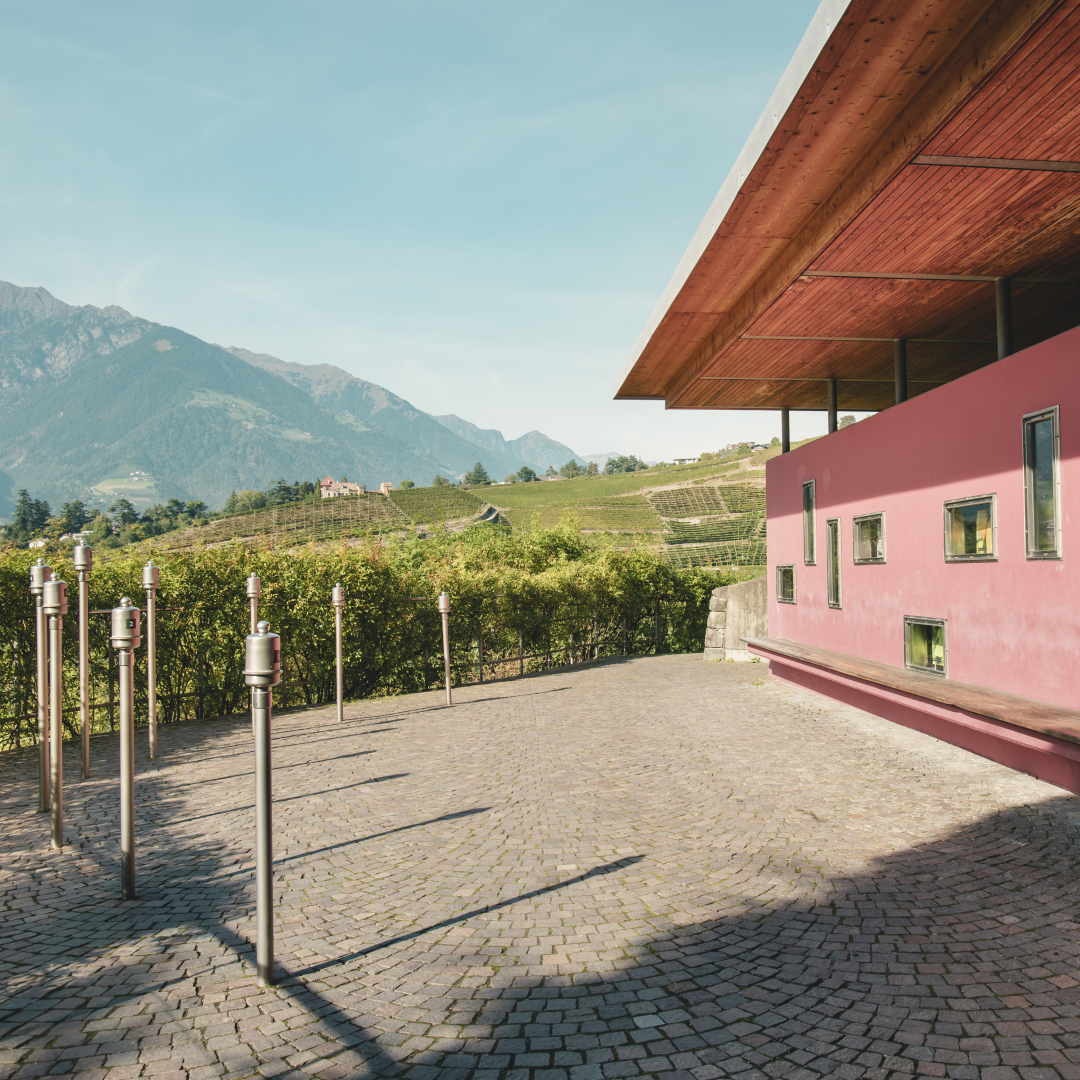All about Palms!

The “All About Palms!” special exhibition focused on the exoticism and variety of this impressive plant.
The “All About Palms!” exhibition was located in Trauttmansdorff Castle’s historic remise as well as several other points in the Gardens.

Highlights

Seychelle Nut
Lodoicea maldivica
The Coco-de-Mer Palm is an amazing plant that grows in the Seychelles Islands. Its seed, the so called ‘Seychelle nut’, is the world’s largest seed – and with a weight of 24 kg, the heaviest as well.
Leaf Record
With leaves ranging from 15 to 21 metres in size, the Raffia Palm (Raphia farinifera) has the largest foliage of any plant.
Messenger of Prehistory
A 65 million year old petrified imprint of a fan palm leaf found at Häring in North Tyrol, Austria, proves that the area now occupied by the Central-Eastern Alps once featured a subtropical climate and vegetation.

There is considerable variety in the outward appearance of palm species. Most palm trees possess adventitious roots – the Oil Palm has as many as 13,000 – and have trunks that do not thicken with age: Unlike the conifers and broad-leaved trees whose stem grows year by year in thickness, palm trees have no secondary growth. Once the palm trunk has reached a certain diameter, it only grows in height, whether the variety is bottle-shaped, prickly, smooth or shaggy. The various colours and forms of palm leaves have been influenced by climatic factors and zone of origin: Fan-leafed palms and blue-grey foliage originate from drier climates, while dark green and pinnate-leafed palms develop in zones with higher humidity. One palm inflorescence can carry up to 2 million individual flowers; these can be either male, female or hermaphrodite. The female flowers develop into berries (dates), shelled fruits (snake fruit), or stone fruit (coconut). Palm fruits such as palm seeds are often fat-rich and oil-bearing, or sometimes high in starch content.

Palms were among the first cultivated plants, worshipped by the Egyptians as a sacred tree and also esteemed by the Greeks and Romans as a highly resonant symbol of victory. With the exception of the roots, every part of the palm has a practical use. Edible fruits (such as coconuts and dates), oil and rattan fibre are the most popular palm products in Europe, but the plant is also used to make palm sugar, wine, vegetables (hearts of palm) and flour. It is even used to produce drugs and intoxicants (betel nut) and as a component of cleaning and cosmetic products. Lesser-known palm products include ‘vegetable ivory’, used in jewellery, and palm wax, which is used as a coating on candies and chewing gum as well as a component of shoe and furniture polishes. Oil palms have recently gained increased attention as an alternative crop in response to rising public awareness of environmental issues. The exemplary model of palms as a useful plant, however, is surely the Coconut Palm: Its fruit provides fibre, its seed oil and a tasty nutritive tissue.
